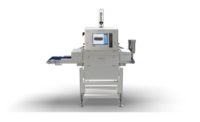Most people can quickly spot the signs of a pest infestation in a poultry house: beetles crawling up the exterior walls, swarms of flies near piles of organic debris, or chewed-up litter by feed pans. However, not everyone associates these signs with what they can bring into an operation: the beginning of a potential foodborne disease transmission.
Insect pests are not just a nuisance to animals and producers. They are also an often-overlooked factor in the food safety process. Controlling insects through an Integrated Pest Management (IPM) program can lower the potential spread of pathogens and diseases in poultry production.
Learn the steps producers can take to mitigate pests and how to effectively treat infestations while also helping to prevent chemical resistance issues and improve food safety efforts.
Understanding foodborne pathogens
Historically, plant facilities were solely responsible for protecting the food supply from foodborne pathogens. But now that responsibility has moved further upstream to include the farms where birds are raised, according to the USDA’s framework to reduce Salmonella illnesses. Knowing how insects spread pathogens is one of the first steps towards solving the problem.
“Take a fly, for example,” said Alissa Welsher, Ph.D., Elanco food safety technical consultant. “It’s covered in sensory hairs. When a fly lands on fecal matter containing Salmonella or E. coli, the sensory hairs pick up and hold that pathogen and transfer it to wherever it lands next. This action is similar to how a bee can land on a flower and pick up pollen on its legs.”
An IPM program, as part of an overall food safety program, can control a poultry flock's well-being and performance potential and reduce zoonotic pathogen loads, such as Salmonella, E. coli, and Campylobacter. Understanding the connection between flock health, pest management, and foodborne pathogens is critical to ensure a poultry supply is properly protected.
Strategies to minimize pest issues
Creating an effective IPM program has many benefits to a producer, including tackling costly and annoying infestations, creating an environment that supports flock health, and reducing the potential for foodborne pathogens.
Producers can minimize the spread of pathogens by making facility health a priority. Here are some best practices:
- Keep grassy areas near production buildings mowed to discourage pests from creating a habitat there.
- Regularly clean out litter and ensure that it is not too deep on the floor. Practice cake-outs and windrowing. When rotating out litter, don’t pile it up outside in deep piles. Pests thrive and breed in dark, damp environments.
- Keep buildings dry, including outside areas that may become muddy. Flies lay eggs in wet environments.
- Make sure that ventilation fans are working to keep facilities dry. Clean up dust, feathers and other debris that may get sucked into the fans. (The same goes for any organic waste that accumulates inside facilities.) Debris piles attract insects that like to feed on and breed in organic material.
- Walk buildings often, looking for signs of pest damage so you can treat those areas quickly. Damage to insulation is a key indicator of a beetle infestation. It also makes the facility less energy-efficient. Another potential sign is damage to the sealer, footers, and bottom plates – beetles in the larval stage can chew through and destroy these areas very quickly, leaving a gap around the perimeter of the building. This gap will then attract more pests into the building.
- Apply insecticides and/or rodenticides properly – in the right amounts, in the proper places, and at the correct times – to help directly control pest populations.
Monitor chemical use carefully
Many pests breed outside the facility and then move into the building in search of a food source. Therefore, treating both the interior and exterior of a house is recommended for increased control. With four commonly used chemical classes, proper rotation is vital to prevent resistance issues from occurring.
“I always tell people to read the label and look for the chemical class, not the active ingredient,” Welsher said. “Our best defense against developing resistance to these chemicals is ensuring we properly rotate the chemical classes. Apply stronger chemical classes during the times of year you know there’s a higher population of flies or beetles, and then follow with a weaker chemical class to maintain that pest.”
Proactively check labels for correct dosages, chemical classes, and active ingredients and work with a trained chemical applicator to ensure that best practices are followed.




Report Abusive Comment